Abstract
The dynamic characteristics of the human motor coordination system differ depending upon the physiological state. By using complex inputs the predictive apparatus is eliminated and steady state experiments can be used to study the neurological response. A series of linearity and other control experiments elucidate the limitations and adequacies of the method. Some of the features shown are a resonant peak at 3 C.P.S. and both minimum and non-minimum phase elements.
Full text
PDF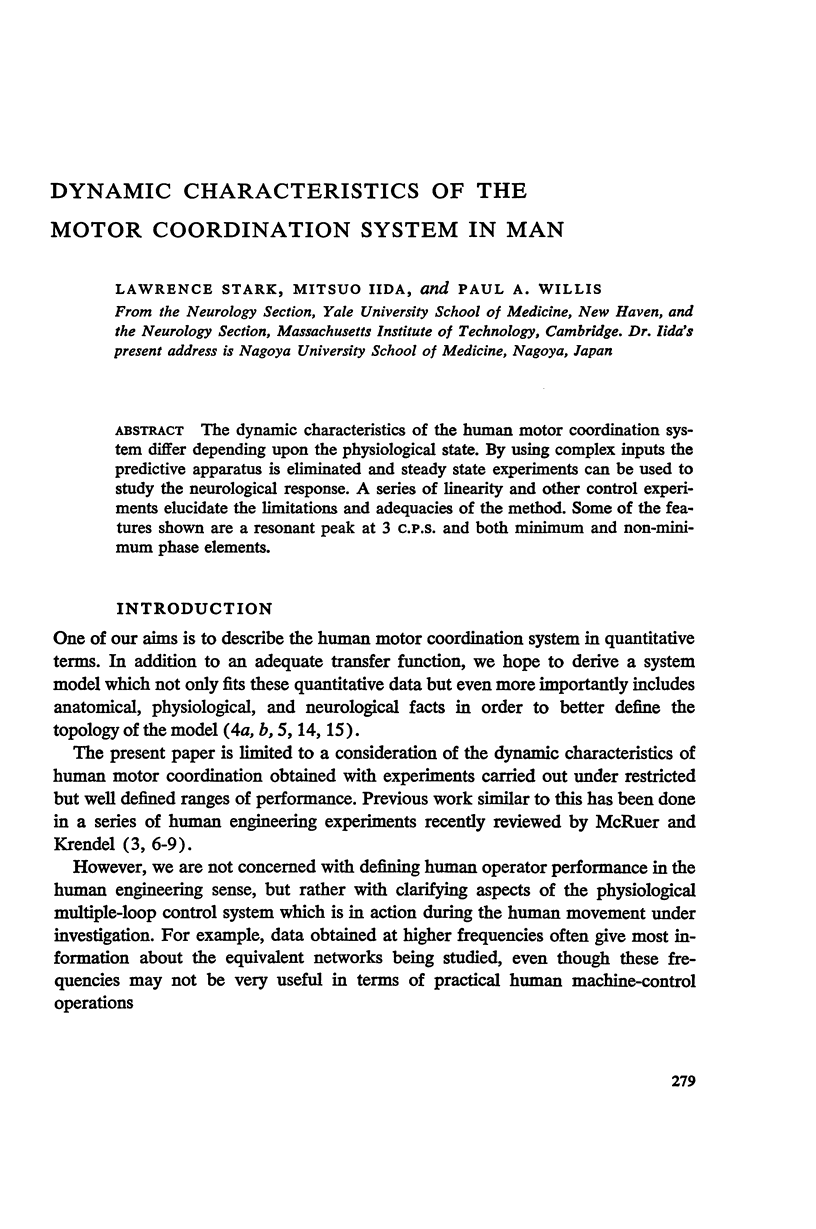
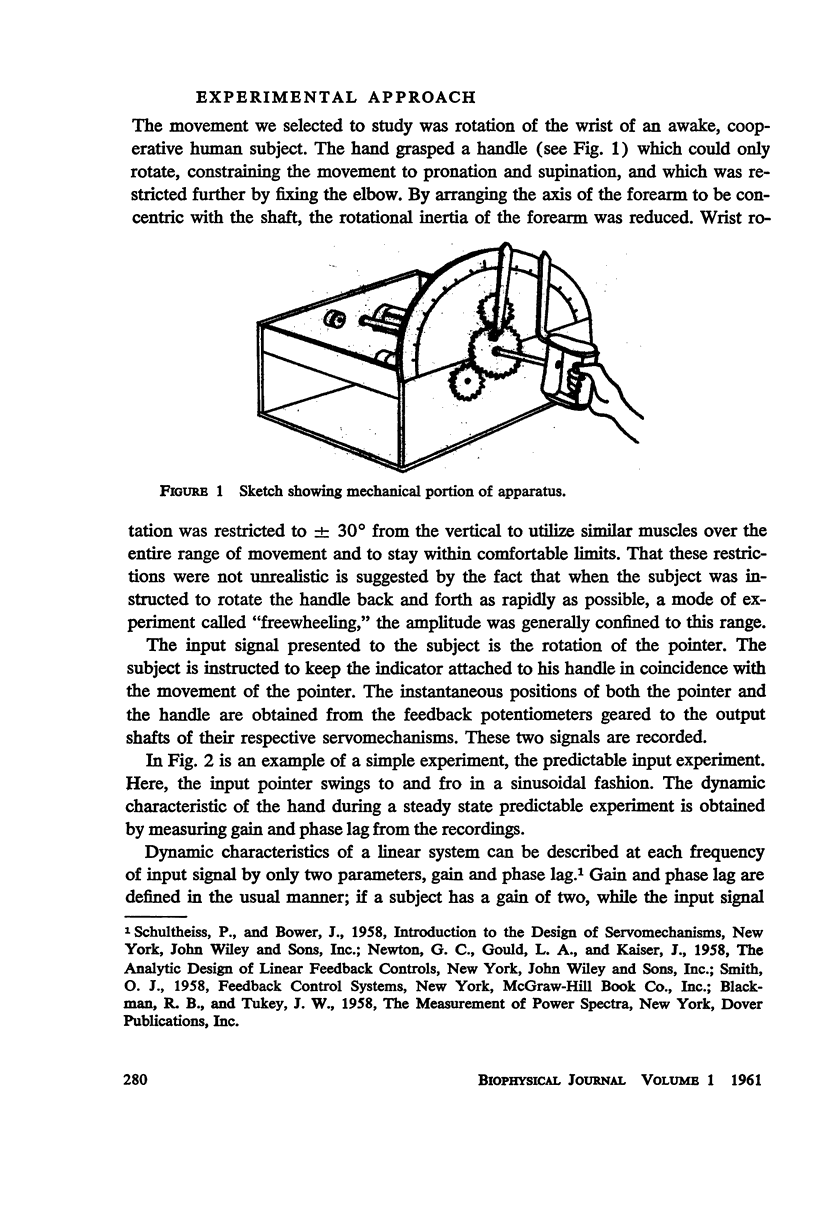
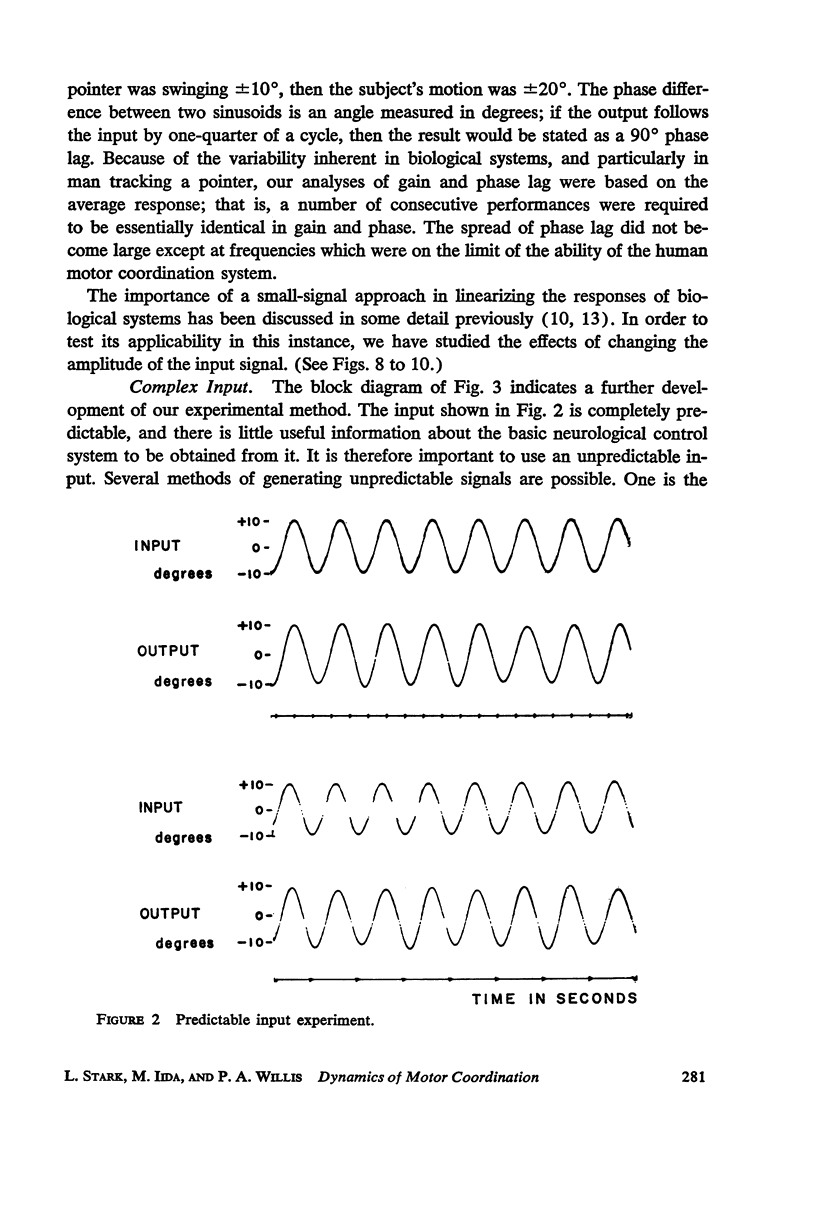
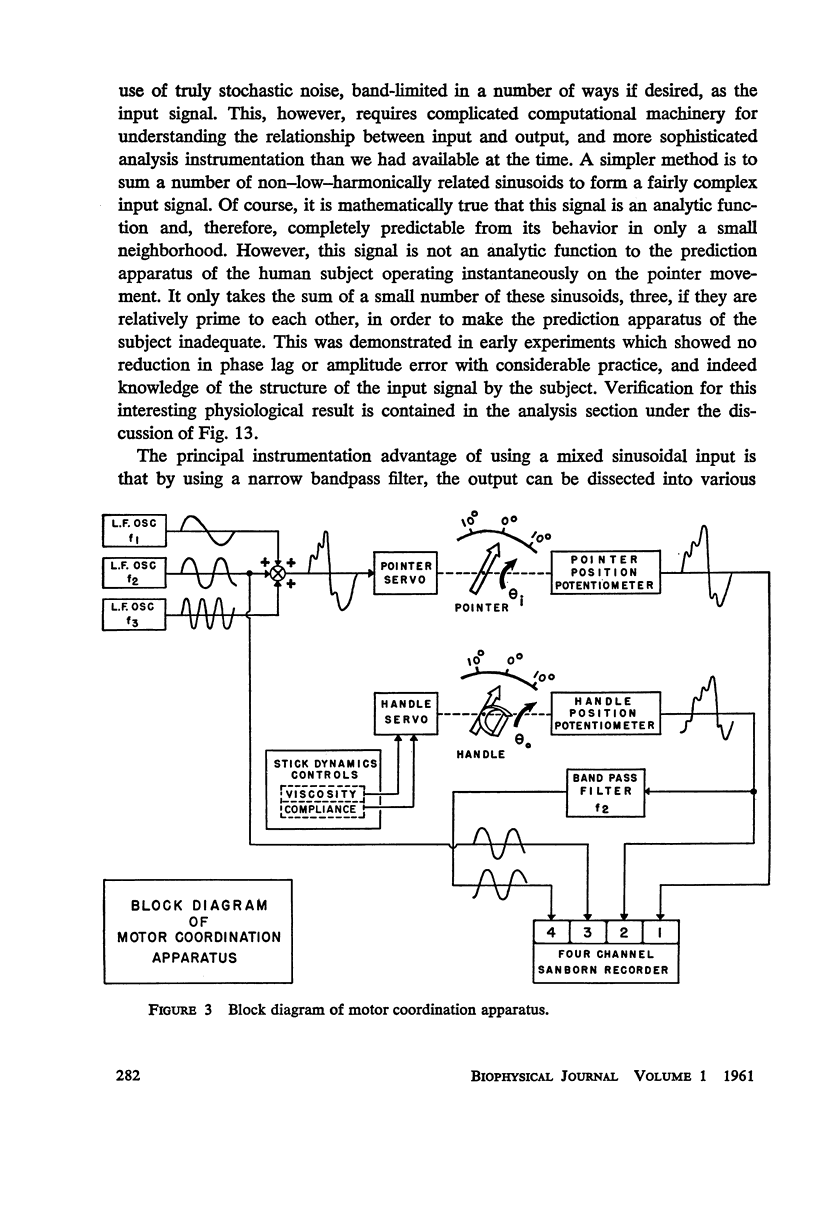
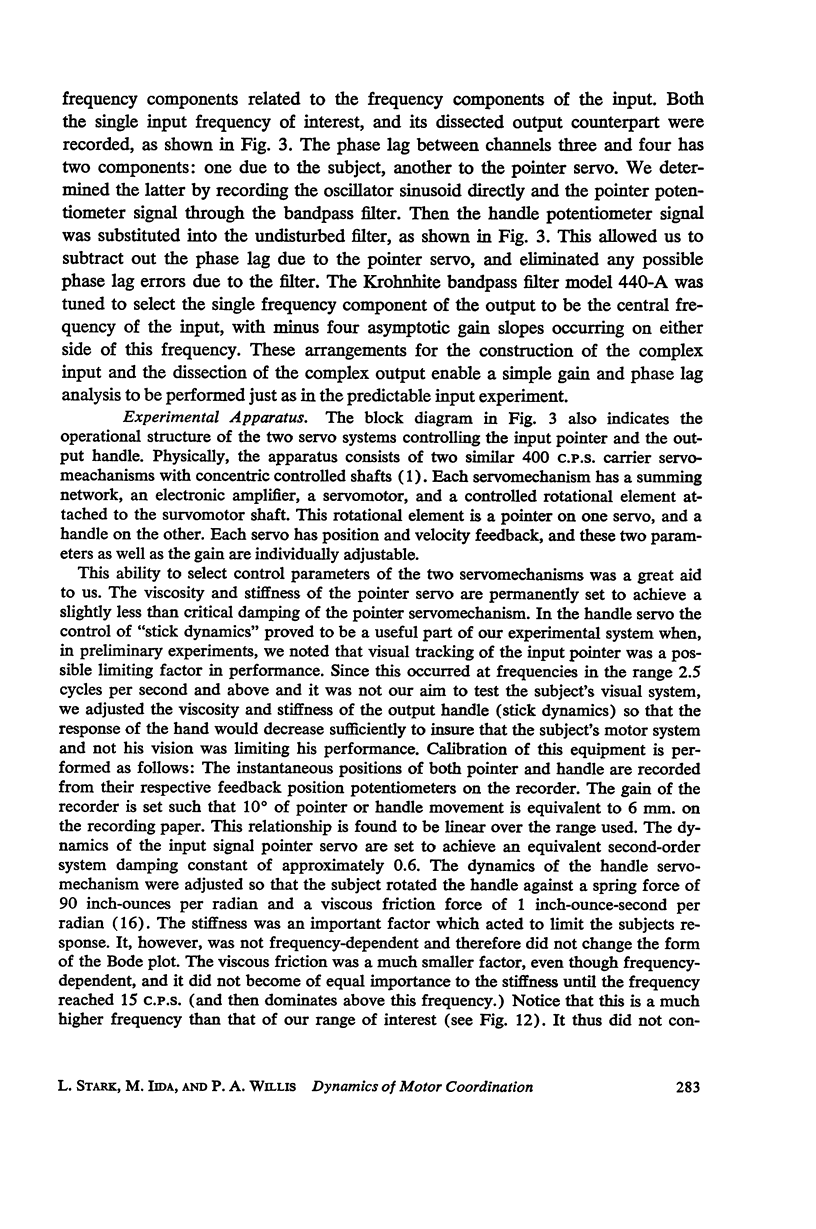
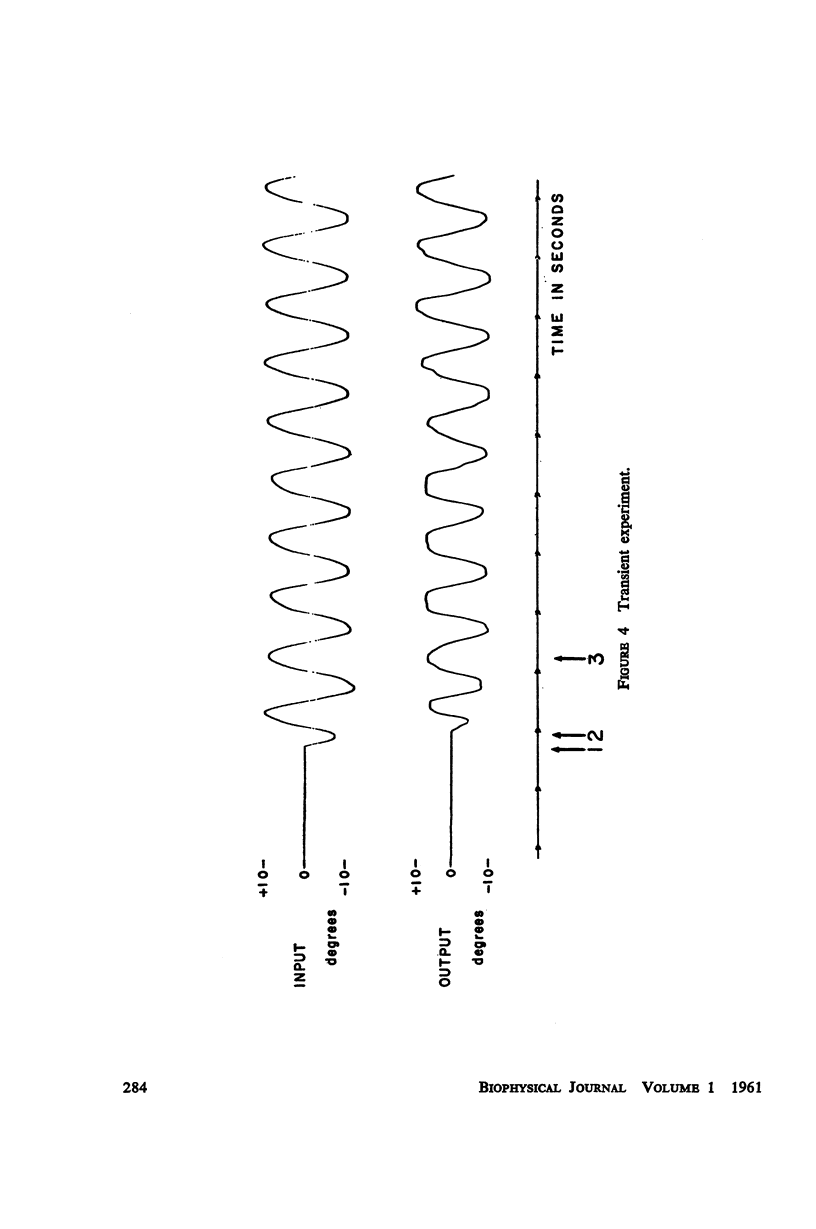
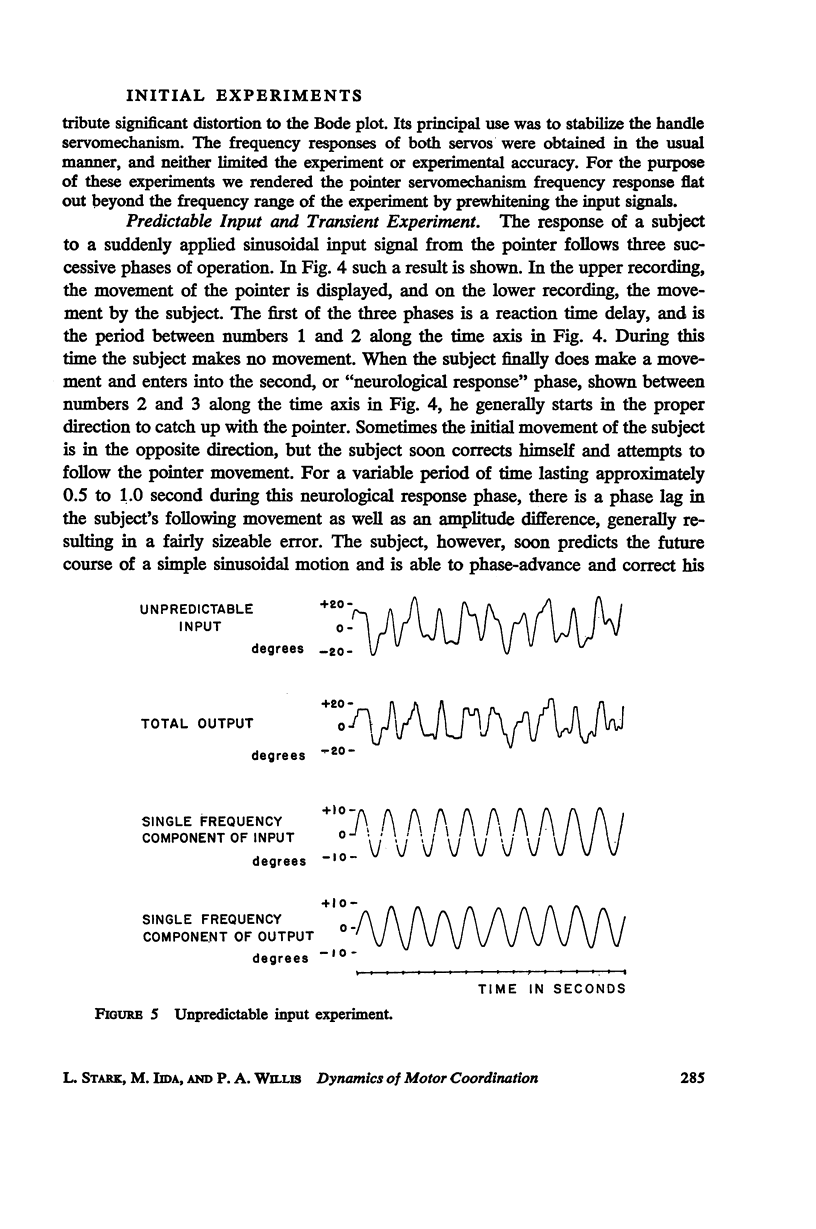
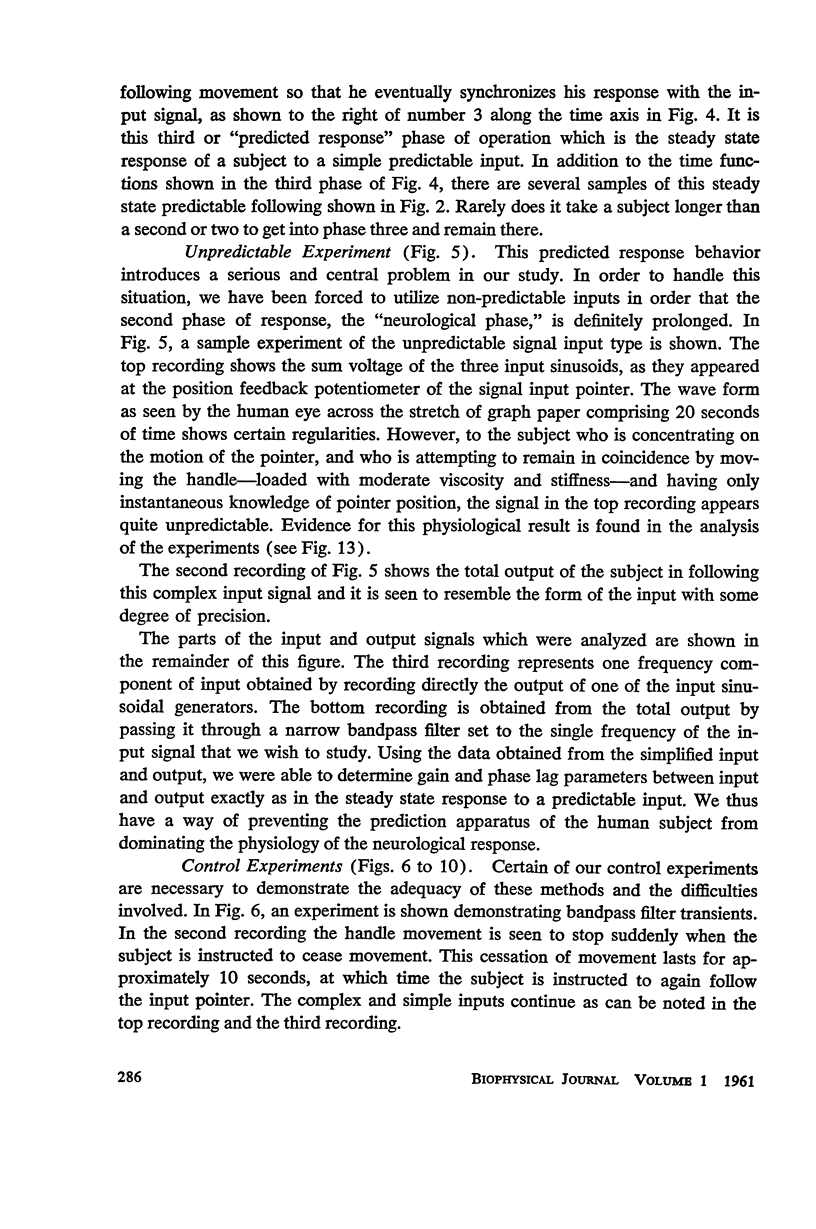
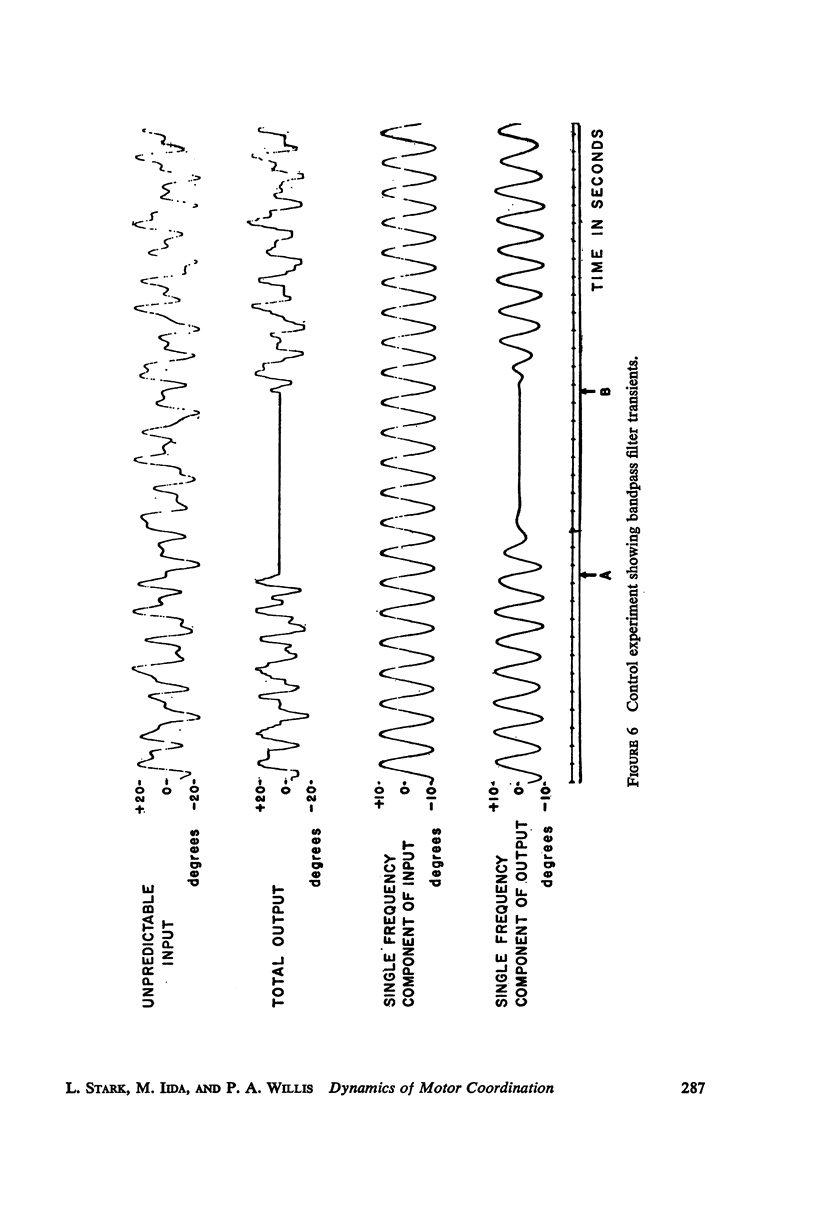
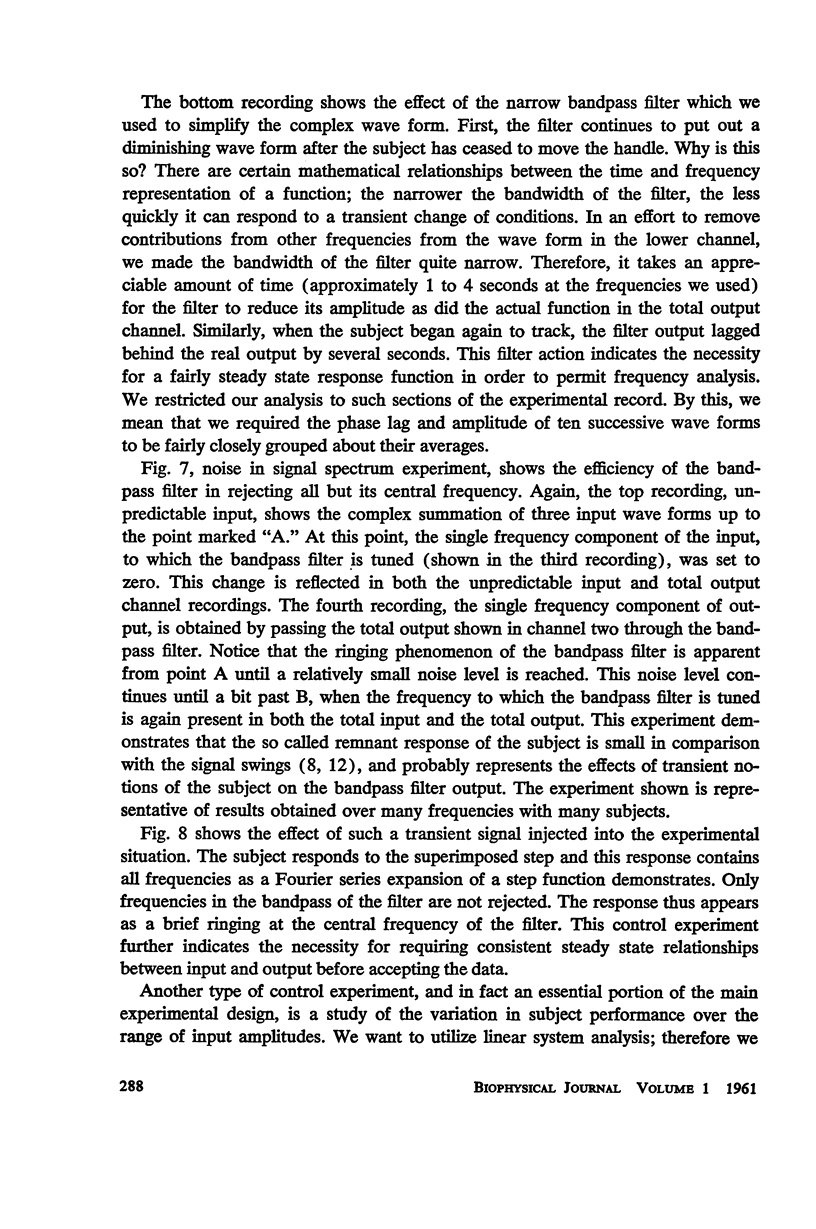

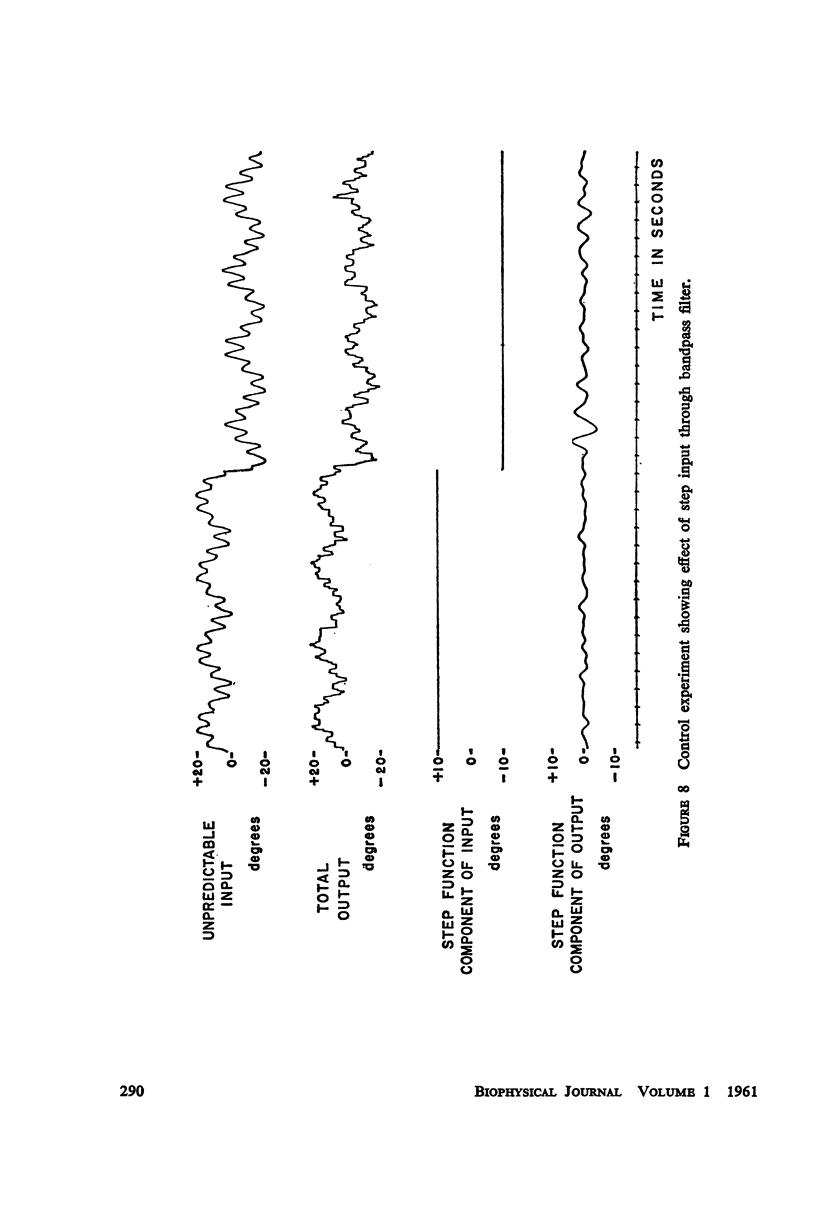
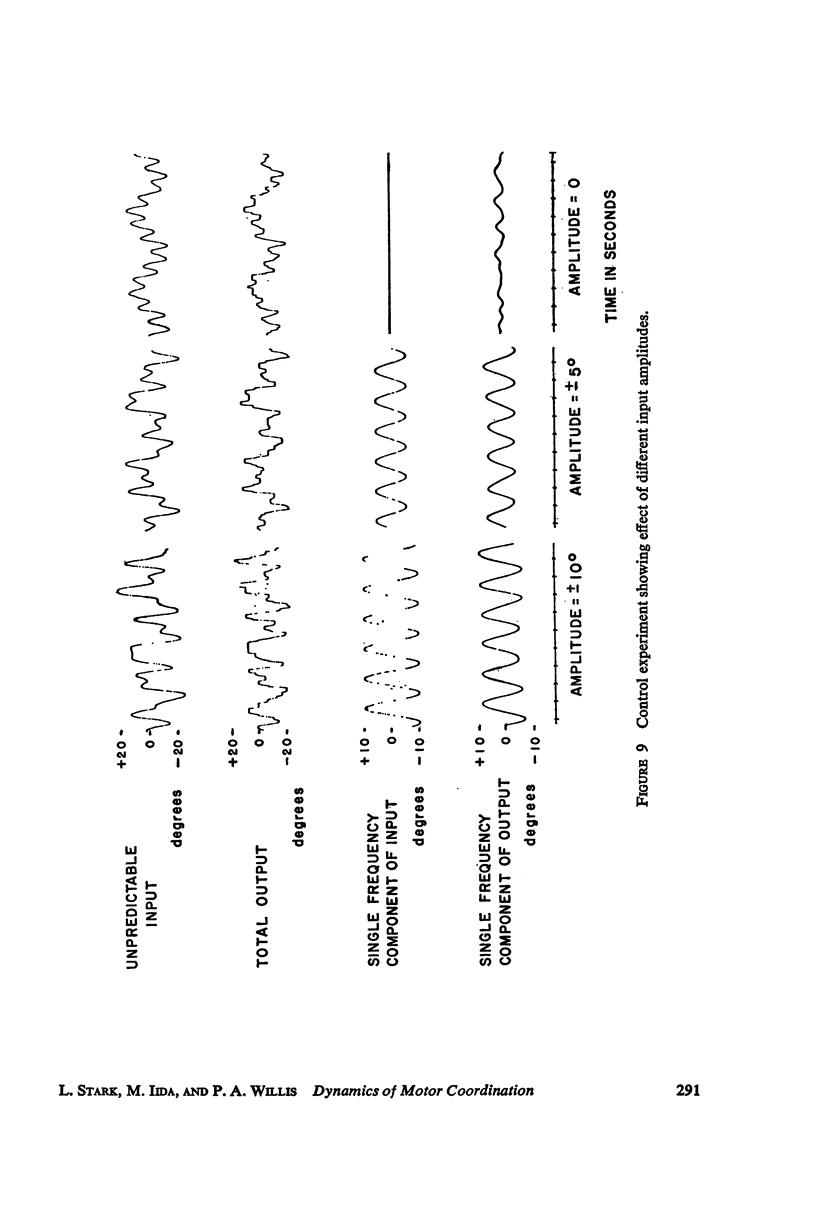
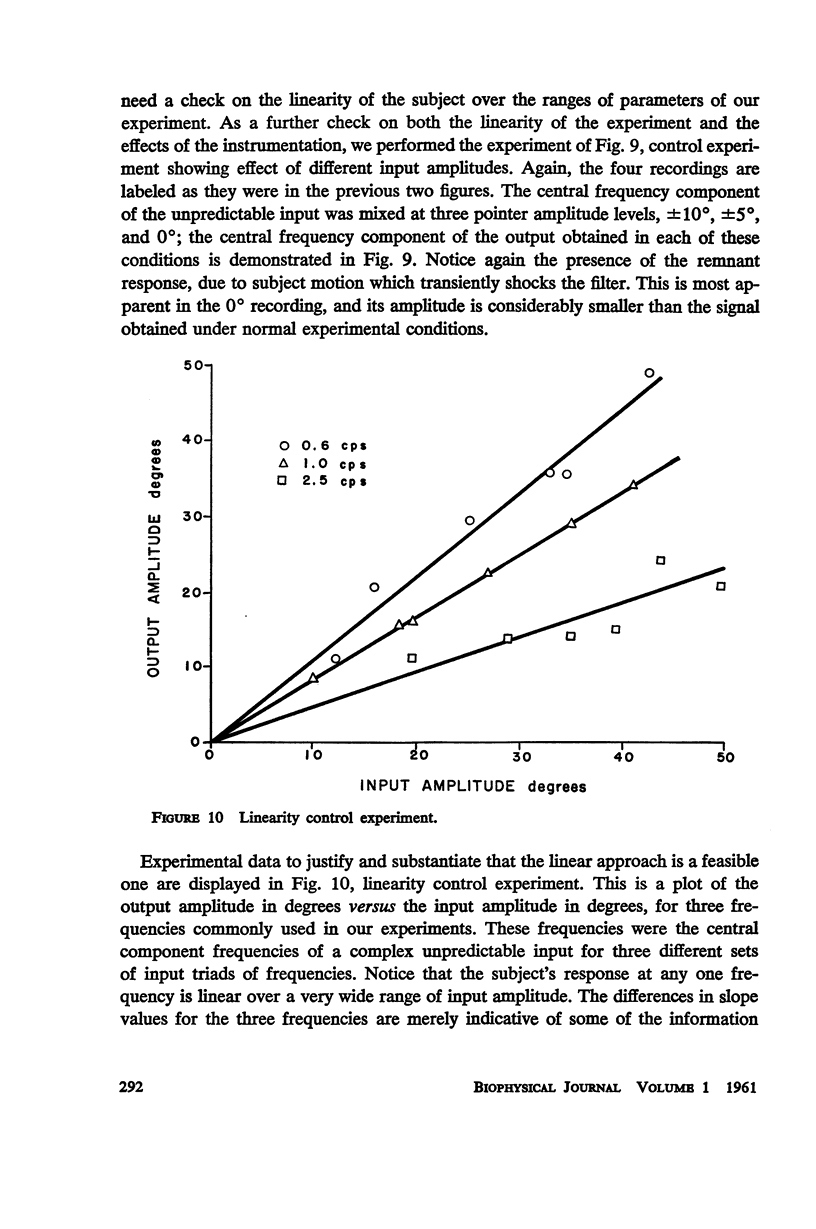
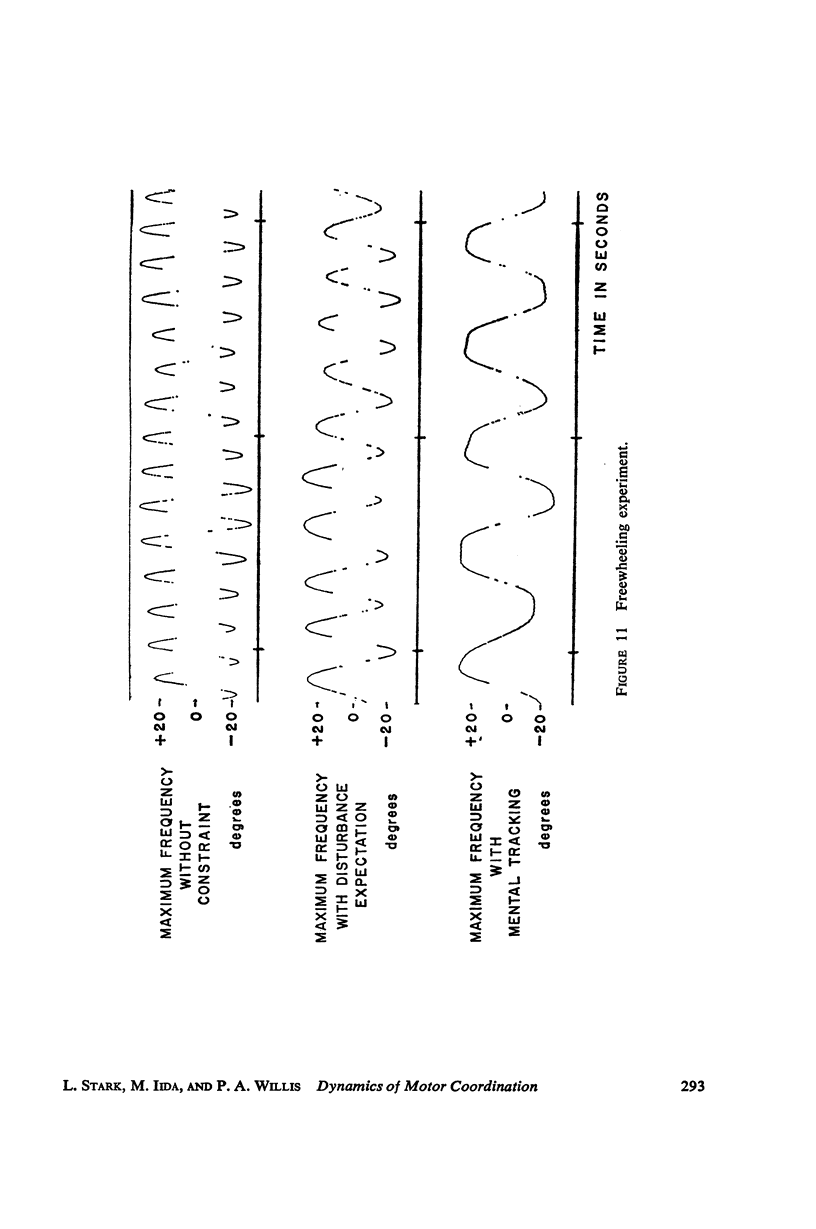
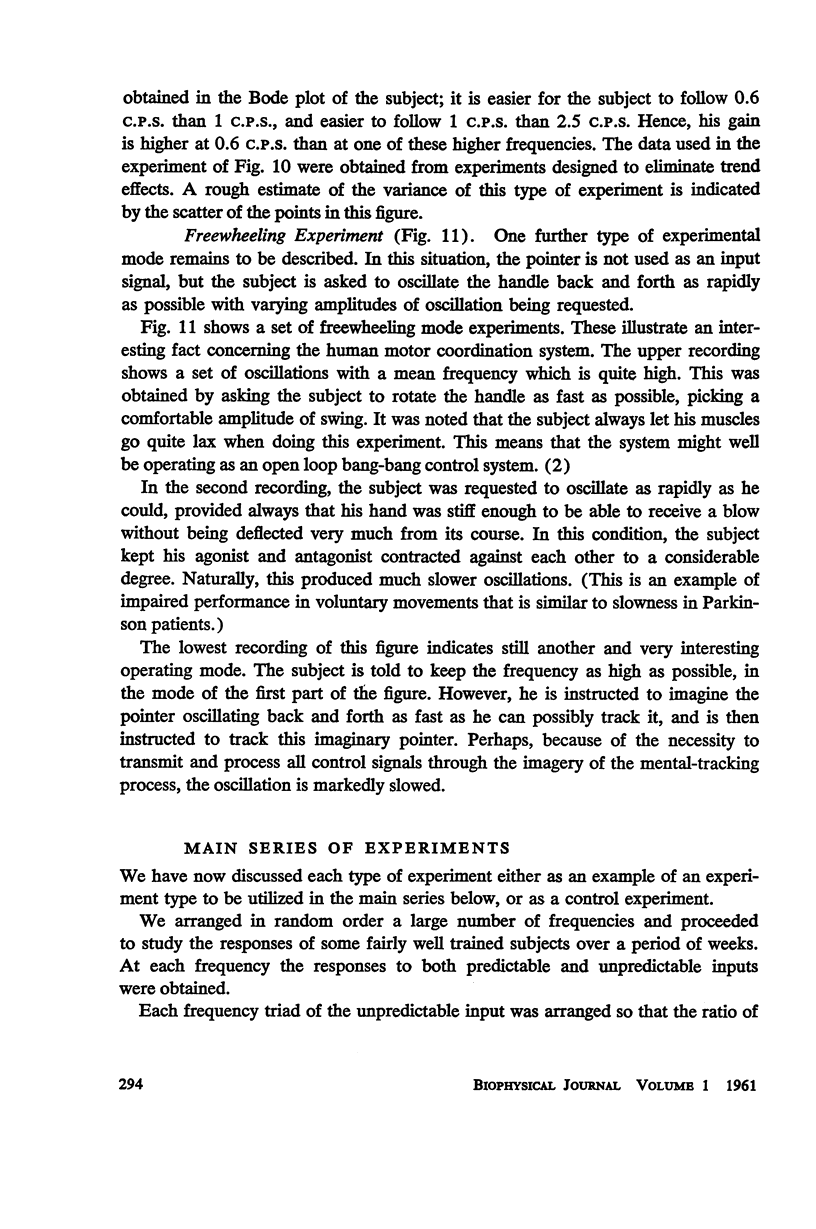
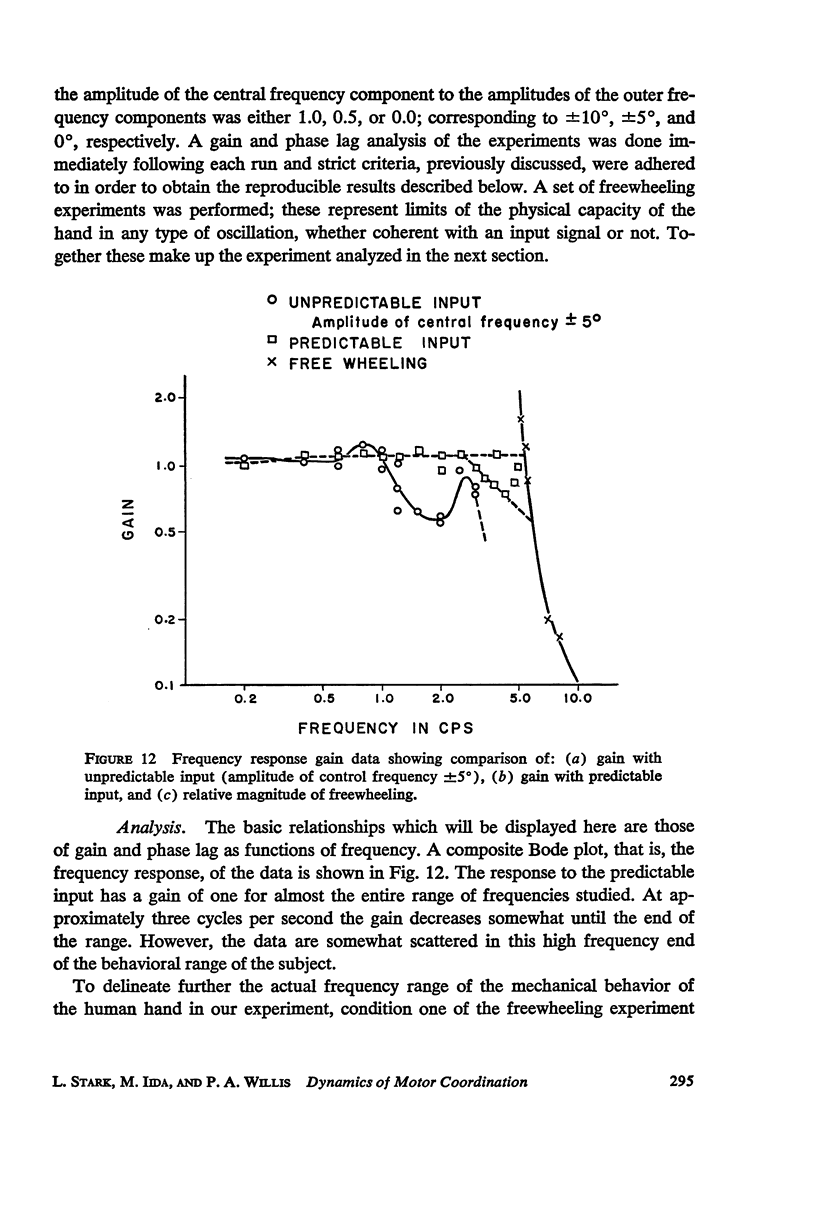
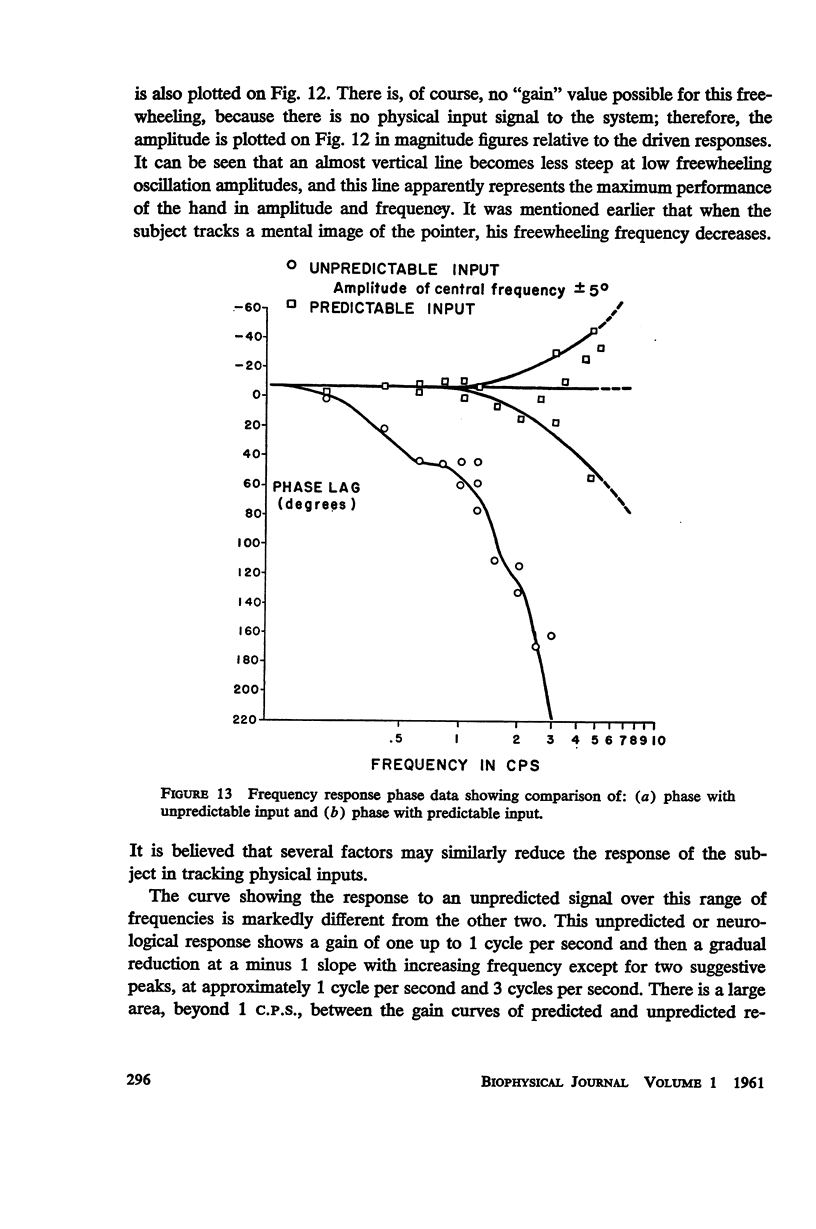
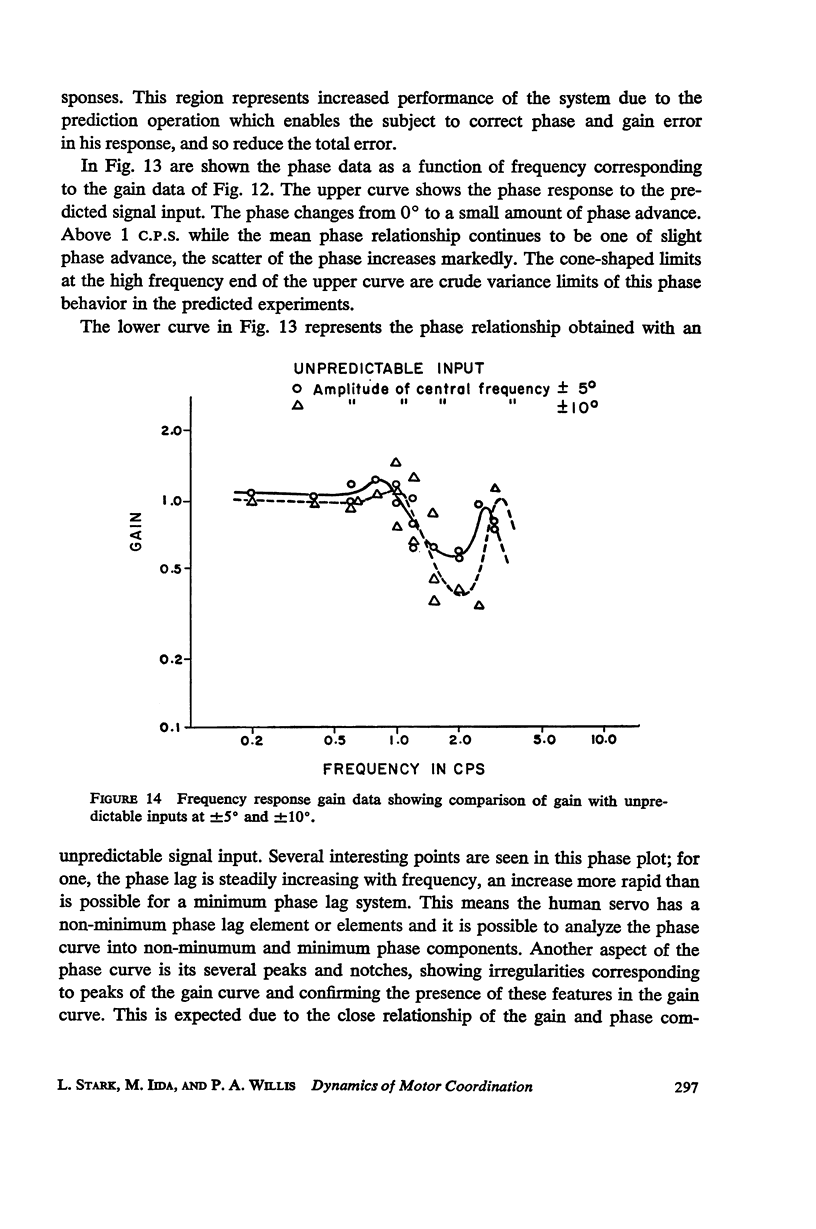
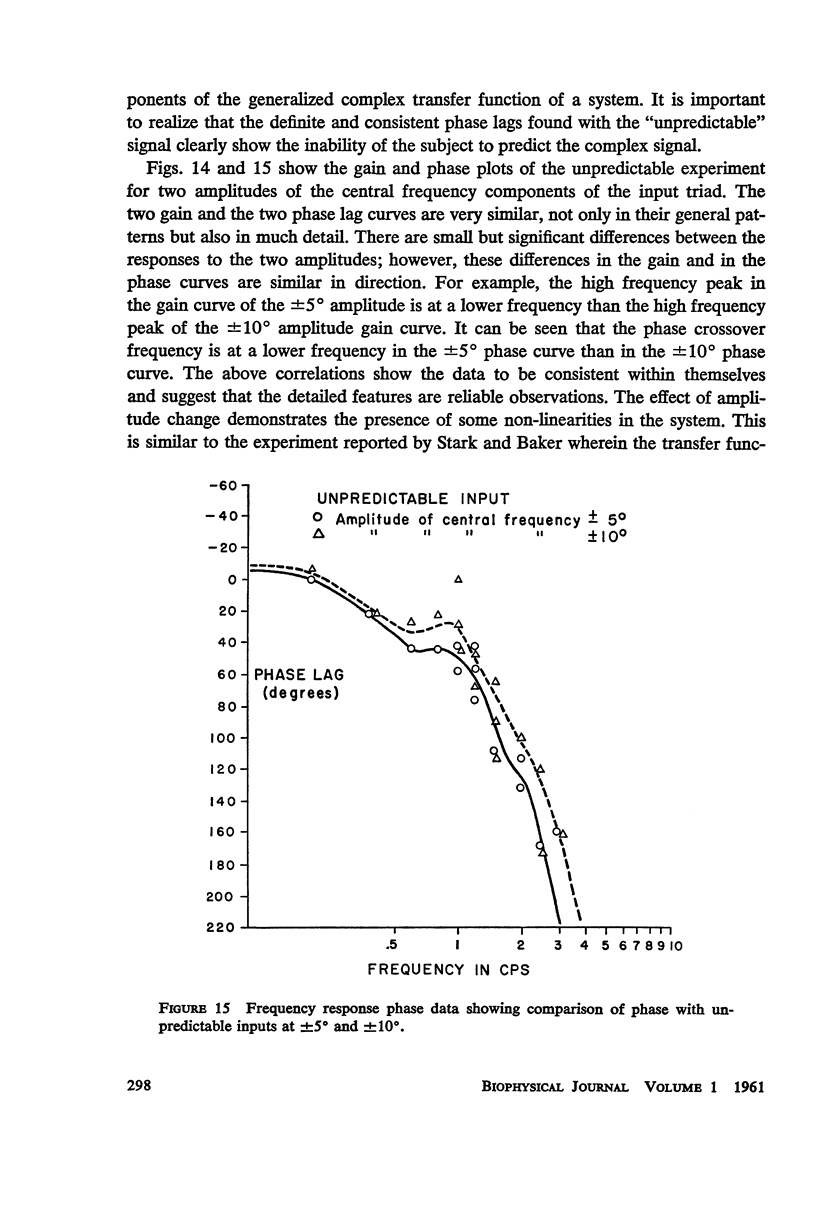
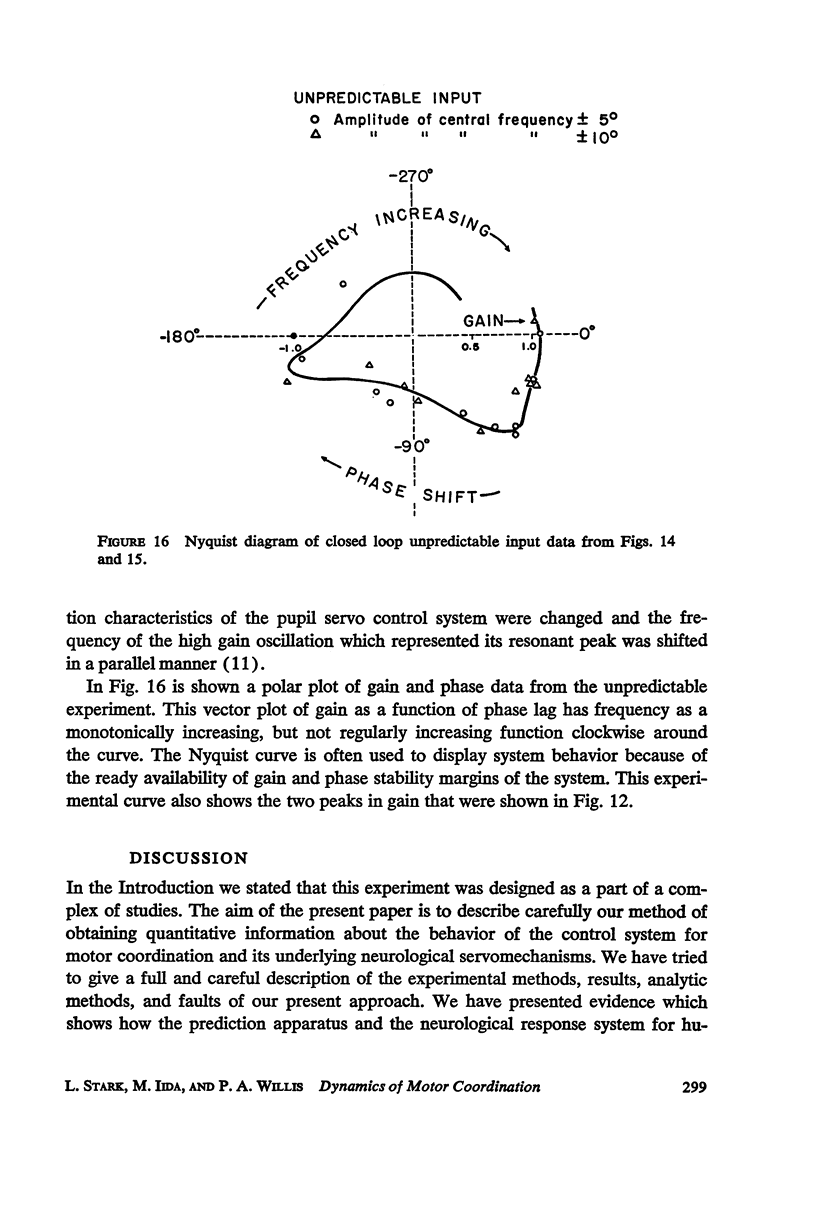
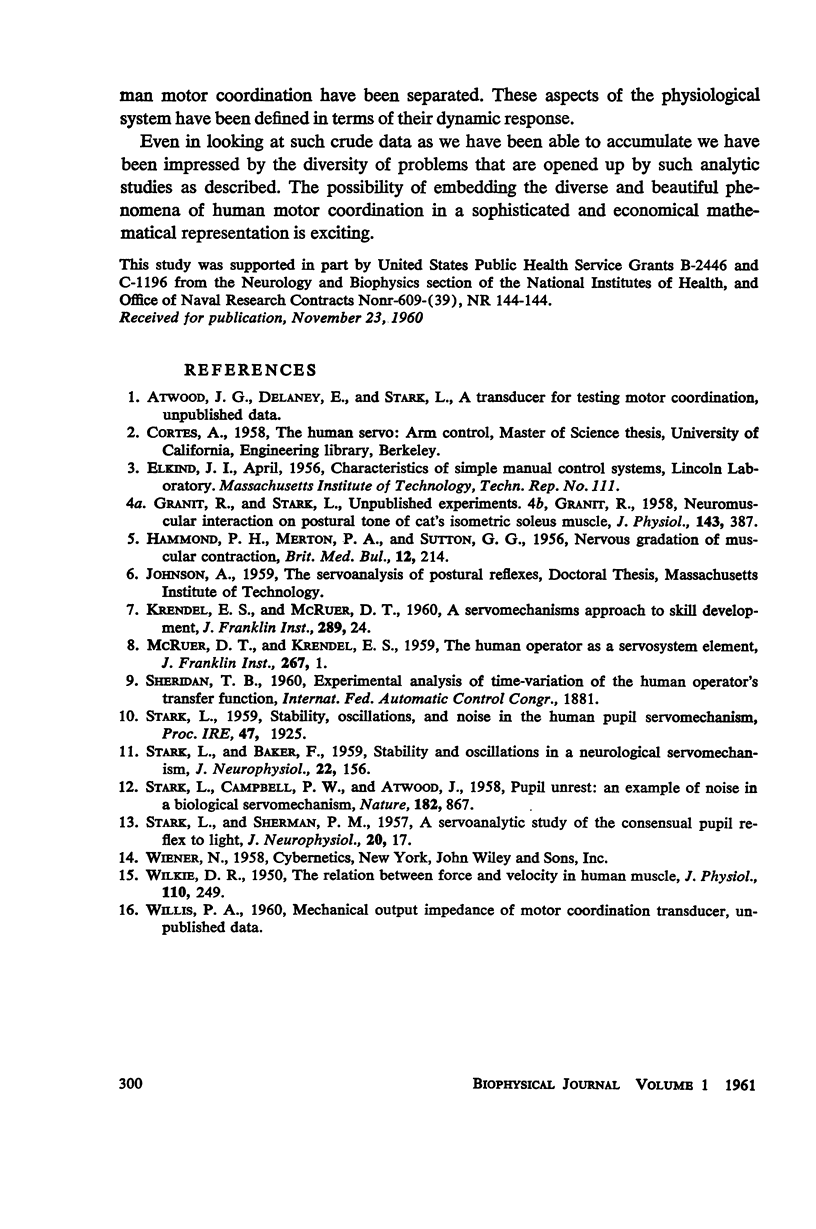
Selected References
These references are in PubMed. This may not be the complete list of references from this article.
- HAMMOND P. H., MERTON P. A., SUTTON G. G. Nervous gradation of muscular contraction. Br Med Bull. 1956 Sep;12(3):214–218. doi: 10.1093/oxfordjournals.bmb.a069553. [DOI] [PubMed] [Google Scholar]
- SHERMAN P. M., STARK L. A servoanalytic study of consensual pupil reflex to light. J Neurophysiol. 1957 Jan;20(1):17–26. doi: 10.1152/jn.1957.20.1.17. [DOI] [PubMed] [Google Scholar]
- STARK L., BAKER F. Stability and oscillations in a neurological servomechanism. J Neurophysiol. 1959 Mar;22(2):156–164. doi: 10.1152/jn.1959.22.2.156. [DOI] [PubMed] [Google Scholar]


